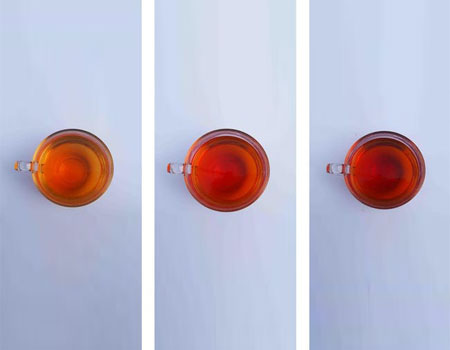
Please Share your Email if you Wish to Receive the Golden Tips & Tales Newsletter from History of Ceylon Tea Website


Tea is one of the most popular drinks in the world. Tea is personal; everyone has opinions about making the perfect cup. But what does science say about getting the most out of your brew?
It’s not the only reason to drink it, but tea consumption is linked to a number of health benefits. It’s thought to improve mood and cognition, and reduce risk of heart disease and diabetes.
See also: A Handful of Genes Influences Which Drinks We Prefer, Study Suggests
Tea is a source of micronutrients, including fluoride, magnesium, and zinc. However, the health benefits are mostly linked to three main bioactive compounds: catechins, caffeine and L-theanine. Bioactive compounds are non-essential nutrients that may impact health.
Laboratory and animal studies have suggested these compounds may have multiple health effects. But, the results in human studies are much less clear. Catechins are a type of polyphenol, a group of chemicals with antioxidant properties. Antioxidants are molecules that prevent cell damage. Caffeine makes you feel alert and the amino acid L-theanine is believed to be responsible for tea’s relaxing properties. These compounds also contribute to your brew’s taste and mouthfeel.
Black, oolong, white, and green teas all come from the same plant, Camellia sinensis. The differences come from the harvest timing and processing, particularly the level of oxidation, a reaction that occurs when processed leaves are exposed to high oxygen levels. Black tea is fully oxidized, oolong is partially oxidized, while green and white teas are unoxidized. White teas are from early harvests, green from later.
Processing has little impact on L-theanine, with similar levels found in all teas. Caffeine levels vary widely, however, black tea typically has the most. Catechins are altered by oxidization, so levels are highest in green and white teas.
More antioxidants and less caffeine means green tea is typically considered the healthier option. So green tea has been the focus of most studies of the health benefits. However, all teas are a good source of L-theanine, caffeine, and catechins.
But, be warned. Having “tea” on the label doesn’t guarantee bioactive content or health benefits. Pre-packaged iced teas and instant teas may have limited bioactives and can be high in sugar. Herbal and fruit teas don’t contain any actual tea leaf, and so properties vary.
Excessive consumption of tea can also be harmful, leading to over consumption of caffeine. Tannins, which are another group of polyphenols in tea can also bind to iron and reduce iron absorption if consumed with or soon after a meal.
Getting the maximum health benefit from your cuppa is more about the brewing than the tea you choose.
Patience is important. If you are jiggling the tea bag around in the cup for 15-30 seconds, you are probably only getting a fraction of the bioactives you would by following the maker’s instructions.
Brewing with freshly boiled water for two to three minutes, as per the instructions, extracts about 60 percent of the catechins, 75 percent of the caffeine, and 80 percent of the L-theanine. The longer you brew, the more bioactives you get, but also the stronger the taste. Research has found that brewing for 20-30 minutes at 80 degrees C extracts the maximum level of bioactives, but that’s not really practical for daily life and probably isn’t very tasty!
Interestingly, the pH of water also impacts the extraction process. Low pH (acidic) water extracts bioactives better than high pH (basic) water. The pH of tap water is about seven, which is neutral, so there might be a benefit to adding lemon with your tea, rather than after it’s brewed.
The idea of making tea in the microwave is horrifying for purists. It’s argued microwaves are inferior to kettles for heating water, as there is less control over the temperature. But the microwave could actually be a useful tool for extracting more bioactives.
Microwaves can actually increase the levels of bioactives in your cup. Adding freshly boiled water to the teabag, steeping for 30 seconds, followed by a minute in the microwave (medium power) extracts more bioactives than a standard three-minute steep.
Some studies have suggested milk alters the antioxidant activity and health benefits of tea.
But others have shown the same level of antioxidants reach the blood after consuming tea with and without milk. There’s no real science behind the age-old question of when the milk should be added. The Royal Society of Chemistry suggests adding it first prevents denaturation, or clumping, of milk proteins, which might give the milk a stale taste.
See also: Cults, Conspiracies, and the Twisted History of Sleepytime Tea
Loose leaf may contain more bioactives because they use higher quality leaves. But leaves in teabags are cut smaller, and this is thought to enhance the extraction process.
Lower quality teas may also include more stems, which are higher in L-theanine than the leaves. So while fancy loose leaf might taste better, you probably get more bang for your buck from a humble tea bag.
Health benefits might not be the only reason we choose to drink tea, but if you want to get the most out of your cup, patience is the key. Whichever type of tea you choose, the longer you brew, the more goodness in each cup.
Comments
(In keeping with the objectives of this website, all COMMENTS must be made in the spirit of contributing to the history of this estate, planter or person i.e. names, dates & anecdotes. Critical evaluations or adverse comments of any sort are not acceptable and will be deleted without notice – read full Comments Policy here)